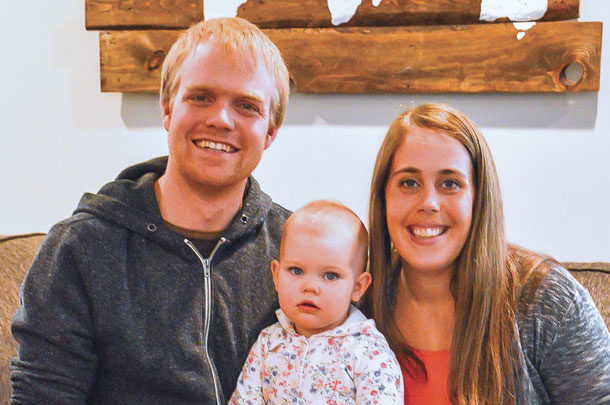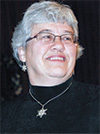Here, Progressive Dairyman takes a look at two young couples, one from Canada and one from the U.S., to find their commonalities as well as differences in their dairy environments.
Meet the Heeg family
Springvale, Ontario, Canada
Stanley Heeg didn’t plan to become a dairy farmer. His wife, Kim, never dreamed of being a farm wife. “The closest I came was a pet goat,” she laughs. Both had other plans for their lives – Stanley was studying for ministry; Kim was going to move to Hungary.
Stanley’s parents had sold their herd of cows when he was just a kid and changed to chickens. At 17, he started working for a neighbour on a dairy farm and was re-acquainted with cows – but left that employment to attend a religious college in Saskatchewan.
Kim experienced a health challenge that cancelled her plans for emigration and caused her to move back in with her parents in Dunnville after 10 years of living independently.
A chance conversation with an uncle left Stanley thinking of a career in dairy, although it took several years for the idea to germinate. He put his name on the list for the Dairy Farmers of Ontario New Producer Program, well knowing it could take a while for acceptance.
In the meantime, he purchased the farm adjoining his dad’s and did contract hog finishing, learning management skills, and taking welding and millwright training, skills that are now very valuable to him.
He met Kim during this time. In August 2015, he got word his name had come up in the New Producer Program; it was time to make a firm decision.
The couple married in October 2015, with Kim stating she wanted to be involved from the beginning if this was to be their life together. They shipped their first load of milk in August 2016.
Meet the Boyce family
Easton, Maryland, U.S.

Jarrod Boyce grew up in Pennsylvania, worked on a dairy farm during high school and continued in dairy as a herdsman responsible for all management decisions.
Trisha grew up with dairy, taking part in 4-H and FFA (formerly known as Future Farmers of America). She was the third generation of her family to be involved in dairy, but the family herd was sold while Trisha was in college. She continued to raise heifers on the farm as a sideline to her profession as a registered nurse.
Later, she and Jarrod raised crops as well on her dad’s farm before making the decision to start on their own. They rented a farm in 2014 and began milking. They were fortunate to be able to purchase heifers from several well-established breeders, giving them good genetics for their start.
Current operations
Stanley and Kim’s operation consists of a new, flex-rail freestall barn using sand bedding. It is equipped with flex headrails, one Lely robot, a foot trimming stall, and an office and milkhouse space.
They were able to renovate one existing hog barn for use in housing heifers, which is connected to the main barn for ease in moving animals. They milk about 40 cows, with approximately the same number of dry cows and youngstock.
All are registered Holsteins, which Stanley feels is “a very good herd genetically.” This is predominantly a commercial milk production operation with some sales of fresh heifers to augment income.
A robot was chosen to save on labour as well as allowing Stanley and Kim to be more involved in family activities, something that will become increasingly important as their family grows. They already have one daughter, 16-month-old Juliet, and are expecting their second child in June.
Stanley works with his dad; they both work with the dairy, chickens and fieldwork. They are also able to have alternate weekends off. Stanley has recently ceased his off-farm job to devote his full time to the farm.
Jarrod and Trisha worked for a couple of years on their Pennsylvania farm but felt it would be important to add value to their product. Milk production in the U.S. is not regulated as it is in Canada, and prices are lower with more variation.
Last year, they moved from their original rented farm to a 45-acre purchased property in Maryland, which included a creamery. They have a freestall barn and a swing parlour. This parlour was originally made for Jersey cows, so it has been retrofitted for the larger Holsteins. They are milking about 60 cows, mostly Holsteins but some Jerseys as well.
Most of their milk is shipped to the Maryland & Virginia Milk Producers Cooperative, but about one-eighth is utilized in the creamery, where they make four varieties of cheese. Some is also shipped elsewhere to make cheddar cheeses. Jarrod and Trisha have also started their family; their son, Trace, is now 10 months old.
Family support
Both young couples have had extensive support from their families.
Stanley states, “My dad has been a massive help,” giving invaluable help in time, finances and wisdom. Kim adds, “He just keeps going ... and never, ever complains … he’s amazing.”
Trisha’s parents have been incredible, too, in their support. Her mom works for the U.S. Department of Agriculture (USDA) and has been able to help them navigate through available programs.
Her dad works for Select Sires and provided day-to-day help until their move. He still keeps their heifers at his farm in Pennsylvania. Jarrod’s parents have also helped out, particularly with the move.

Challenges
Stanley and Kim, strong in their Christian faith, feel God led them into this business and intend to make this their life ministry.
While Stanley feels he could benefit from business management training, and indicated there is a ways to go before the farm is completely profitable, the couple was silent at first when asked what obstacles they had overcome. Kim states, “I feel that God’s hand has been on this business, and there have not been major obstacles.”
Jarrod and Trisha’s experience has been different, with many obstacles to overcome. First of all, Trisha broke a leg early last year, leaving her unable to walk for six months. Her baby arrived during this time, and the move to the new farm occurred, making it impossible for her to be as involved as she would have liked.
Her mom moved in to help her. Then there was a huge learning curve in running the creamery. “We are cow people learning to make cheese,” Jarrod quips.
The smaller acreage requires purchase of most of their feed, and finding consistent quality has been difficult. Isolation has been an unexpected problem, as there are very few dairy farmers in the area. This means the dairy infrastructure they knew in Pennsylvania is lacking.
Parts and repairmen are not as readily available. Support systems, both personal and professional, are far away. Probably the largest unanticipated problem was the effect of the transition of feed and housing on the cows. Production dropped to less than half of their previous amount and has still not completely rebounded.
Future goals
The Heegs’ goal is to increase profitability, to expand as quota becomes available, add a second robot and grow their business on a steady basis. They have already grown faster than expected: They started with 35 kilograms of quota, and have since increased to 52 kilograms and have grown from 30 to 40 cows.
The Boyces hope to be able to decrease the number of cows but improve the quality, eventually producing breeding stock with superior genetics.
They would like to show their cattle, but that will have to wait for a few years until their family is a bit older. They envision using all of their milk for cheesemaking, which provides a more consistent payback. Trisha comments, “We left everything for this, so we’re hoping this works out.”
While farming in different countries with different industry structures, both young couples are dedicated and hard-working, but they are eager to meet the challenges presented and overcome to make a success of their endeavour. ![]()
PHOTO 1: Stanley, Kim and Juliet Heeg milk about 40 cows in a freestall barn with a robot in Ontario.
PHOTO 2: Jarrod, Trisha and Trace Boyce are milking about 60 cows in a freestall barn with swing parlour, as well as operate an on-farm creamery in Maryland. Courtesy photos.

-
Alice Guthrie
- Freelance Writer
- Hagersville, Ontario









